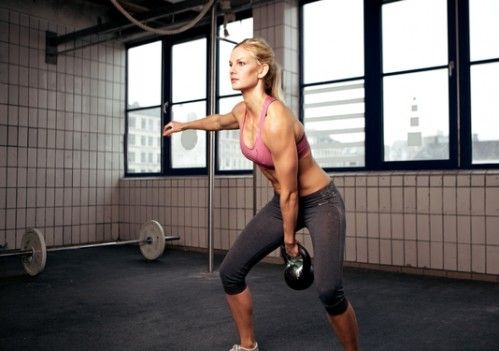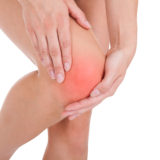

Seven years ago or so, I was flipping through an equipment catalog when I noticed a strange looking object. It looked like a cannonball with a handle on it. I read a little bit about it and, since I am a gym rat and always on the lookout for a new workout tool, I ordered this “kettlebell thing” and a training video from the manufacturer. I guess I was intrigued by the simple design of the tool and the guarantee from the great Pavel Tsatsouline that: “If you train with this method you will never have to suffer the shame of cardio workouts again.” Now, time may have dulled my memory for the exact words of that quote but the essence is there. He was telling me that kettlebell training, done properly, was all the exercise you will ever need. Despite my wife’s chagrin at my purchase of yet more exercise equipment for the basement, I began to test this exercise method in earnest. Long story short, my physique changed drastically enough to convince my wife to start training with the same program. She achieved even better results and we continue to this day to use kettlebells as our primary fitness training method.
The results we achieved are not uncommon. Among the expanding cult of kettlebell enthusiasts around the world you will hear the common refrain that “kettlebell training does it all – cardio, strength, everything.” It is often described as the only total body workout there is. I describe it as integrative movement training using weighted resistance. It is absolutely the safest, most effective form of strength training I have ever used and, in that it also promotes endurance, flexibility and thorough cardiopulmonary conditioning in the same workout, kettlebell training is truly the perfect storm of fitness.
Prove It
The growing din of testimonials for kettlebell training prompted the American Council on Exercise to put this fitness phenomenon to the test. With the assistance of a research team from the University of Wisconsin, Lacrosse Exercise and Health Program, ACE designed a study to measure the intensity level and calories burned during a kettlebell workout. “They make these all-encompassing claims. . .like, if you do this that’s all you need to do,” says Dr. John Porcari, leader of the research team. “We wanted to see how much of an aerobic workout you really do get and how many calories you really burn.”
The study team recruited ten volunteers, male and female, ages 29 to 46, all of whom were experienced kettlebell athletes. Each subject performed baseline tests for general fitness level and their specific level of kettlebell fitness. They were then tested by completing an intense 20-minute workout performing a predetermined number of 1-armed kettlebell snatches. During the workout each athlete’s heart rate was monitored at regular intervals and their blood lactate levels were measured immediately after the workout. Upon completion of all of the test subject workouts, the results were tabulated and an average calorie burn was calculated.
Maestro, Drumroll Please. . .
The researchers arrived at an average figure of 20.2 calories burned per minute during the 20-minute workout, “. . .which is off the charts,” says Porcari. “That’s equivalent to running a 6-minute mile.” Now, having been a pretty fair distance runner in my younger days I will tell you that running at that pace for an extended period of time is pretty tough, and few people can develop the capacity to do it. The beauty of kettlebell training is that virtually anyone can learn it and achieve this level of calorie-burning very quickly.
Of course, it must be pointed out that this is one study and it focused on one specific aspect of fitness training – workout intensity as measured by calories burned. It did not measure strength, endurance or flexibility gains, which are all extraordinary attributes of kettlebell training that enthusiasts like me have been trumpeting for years. But it is a promising start and the results point to the possibility that other claims of amazing results with kettlebells may not be so crackpot after all.
These remarkable results notwithstanding, there is one caveat I want to stress before you jump into a kettlebell class.
All Kettlebell Workouts Are Not Created Equal
To put it bluntly, there is a lot of bad kettlebell training out there. The kettlebell is a unique training tool that has a center of mass located approximately 4 to 6 inches below the handle. Implementing a program that allows one to safely move this weight, while taking advantage of the extraordinary exercise benefits this design offers, requires specific training. A fitness training certification doesn’t guarantee that a trainer understands how this apparatus works. In order to safely and effectively workout with a kettlebell there are technical movements that must be learned and are best taught by an experienced kettlebell trainer.
Common mistakes I see made in kettlebell training are:
- Poor technique instruction – this leads to poor results and potential injury. There are certain foundational movements and positions that must be learned and repeated in order to safely and successfully progress with this training.
- Using kettlebells like a dumbbell – this is not necessarily unsafe, it just shows a lack of understanding for the way this tool works. Used properly the kettlebell allows whole-body integrative movements that make you work harder and develop the muscles in a way that allows them to work more efficiently together, both in training and real-life movements.
- Conventional use – kettlebell training done correctly should create a High-Intensity Interval Resistance Training (HIIRT) effect. Very often I see the typical 10-8-6 reps per set for each body part approach or something similar that don’t create the physiological demand that achieves results. An example of this is the kettlebell workout offered in the ACE article reporting these study results. It is not the program that was used in the study and, in my opinion, will not achieve the level of caloric consumption that was seen in the study results. I performed the week six level program and found it to be a light to moderate level workout. I am pretty sure the women in my wife’s morning kettlebell bootcamp would consider it a break from our usual workouts. It is a perfectly good program. It is safe and will certainly get some results, but it is not the high-intensity training for which the kettlebell has become famous. That being said, if you want to try kettlebell training this workout would be a good, safe introductory program.
Recommendations
If you want to get fit and see amazing results very quickly then, by all means, find a good kettlebell trainer, program or DVD and get going. I am sure you will be happy with the results and you will be fitter, leaner, stronger, and have more energy than you have in many years. Here are a few suggestions to help you get going:
- Find a class that is taught by an RKC certified instructor. RKC is the gold standard for kettlebell training. It is the certification designed by Pavel Tsatsouline, the father of modern day kettlebell training. My instructor training was with one of the original instructors that Pavel trained so I feel pretty confident in my lineage.
- Join a group training class. Kettlebell training lends itself to group workouts. The energy is high and the group dynamic encourages people to work harder and work out to completion.
- Master the foundational movements before embarking on the full program. Proper technique ensures safety and promotes the movement efficiency that allows you to make progress very quickly. The most important movements are: the Swing, the Clean, the Shoulder Press, the Squat and proper rack position.
I have been training with kettlebells now for over seven years. I once had a basement gym full of machines and weights, but that’s all gone now. I train with kettlebells three times per week and, at age 56, I can do everything I did at age 30…and I was in pretty darn good shape back then! Try this approach to fitness. I think you will be pleasantly surprised.
References:
http://www.acefitness.org/getfit/studies/kettlebells012010.pdf, Kettlebells: Twice the Results in Half the Time?, Porcari, J. et. al., Retrieved April 22, 2013, American Council on Exercise, 2010.
http://www.webmd.com/fitness-exercise/news/20100212/kettlebell-workouts-burn-calories-fast, Kettlebell Workouts Burn Calories Fast, Jennifer Warner, Retrieved April 22, 2013, WebMD, LLC 2010.
http://www.webmd.com/fitness-exercise/features/exercise-and-weight-loss-five-truths, The Truth About Exercise And Your Weight, Miranda Hitti, Retrieved April 16, 2013, WebMD, LLC 2010.
http://www.ncbi.nih.gov/pubmed/23176325, High-Intensity Interval Resistance Training (HIRT) influences resting energy expenditure and respiratory ratio in non-dieting individuals, Paoli, A. et. al., Retrieved April 16, 2013, J Transl Med. 2012 Nov 24; 10:237.
http://www.ncbi.nlm.nih.gov/pubmed/11882927, Effect of an acute period of resistance exercise on excess post-exercise oxygen consumption: implications for body mass management, Schuenke, MD, et. al., Retrieved April 16, 2013, Eur J Appl Physiol. 2002 Mar; 86 (5): 411-7.





Dude,
Great article but what’s with the title? Anyone who seriously appreciates kettlebells would be insulted by the Valley Girl title. This is serious training. Let’s refer to it seriously!
Vintage Fitness Studio of Vermont LLC